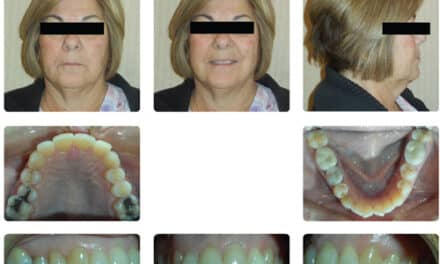by Brett A. Blake
 |
A friend recently told me of a quote he had heard while living in Taiwan as a missionary: “If you visit a country for a week, you can write a book. If you visit for several months, you can only write a paper.” This article is written on information that would be gathered by the weeklong tourist, so I invite and expect that those with firsthand knowledge will provide correction, further insight, and your opinions. (My e-mail is in my bio.)
With the development of new technologies that allow GPs to treat many orthodontic cases, the flat growth projected in the US population, and the fact that there are fewer available orthodontic educators, it is time to rationalize the number of orthodontic specialty programs and the corresponding number of graduates in the United States.
In this country, the total number of practices offering orthodontics has grown from fewer than 10,000 at the turn of the century to more than 45,000 today. (Most of those are GPs offering aligners, as reported by Align Technology.) Demand for orthodontics has not matched the increase in supply and recently may have even declined. Therefore, the need for more orthodontic specialists has declined significantly, and demand for trained orthodontists should permanently fall below today’s need as GPs treat more of the cases and technology to support the GP’s efforts improves.
According to economic principles of supply and demand, the price of orthodontics should begin to free fall in the coming years if something is not done to significantly increase demand and/or to decrease supply. I argue that efforts should be made to do both.
Many might assume that the profession is in temporary decline. At the most recent SureSmile users’ meeting, Orametrix CEO Charles L. Abraham presented data from the US Census Bureau and the AAO Patient Census Survey that showed that a sharp decline in the number of 11- to 15-year-olds in the United States began in 2006. That decline in the population of the profession’s target patient base is not expected to correct itself until after 2010. The correction is not expected to be sudden, and the overall population estimates in the United States (as published by the Population Reference Bureau in the 2009 World Population Data Sheet) show net population growth of less than 1%—not enough to make up for the 400% growth in supply.
Tomorrow’s earnings of today’s orthodontists could be at least protected by a significant rationalization of orthodontic specialty programs in the United States. Perhaps 50% or more of the available resident openings could be eliminated or offered only to those doctors willing to practice outside of the United States and Canada, where population gains are expected to be significant in the coming years.
It is true that there remains a significant percentage of the population that needs orthodontic care and yet remains untreated. One might argue that a significant drop in case fees will have the effect of increasing demand. However, that demand would come at the cost of today’s healthy profit margins and would require orthodontists to become much more efficient. History would argue that orthodontists are not prepared to make the business decisions required to produce services profitably at this new lower price point. Orthodontics would experience consolidation (resulting in more corporate-owned, multiple-location providers) and increased pressure and control from insurance providers. Neither of these are desirable outcomes for today’s doctors.
|
To read more opinions on orthodontic matters, search for “Word of Mouth” at the top of the page. |
Today, orthodontic specialty programs report that it is more and more difficult to recruit faculty. Fewer orthodontists can retire in today’s financial turmoil, and few can afford to take the pay cut to accept a full-time teaching position. Program administrators having difficulty recruiting faculty should interpret their challenge as a sign that their program is ripe for rationalization. Those educators would do the profession more good gone than struggling to survive. Rather than get creative and offer more part-time positions, these programs should consolidate and share the available teachers among fewer schools.
It’s time for educators to seriously consider the impact they are having on the profession. Educators need to closely monitor the supply of orthodontists versus the demand for treatment. They should also consider how they can help provide meaningful differentiation between GPs offering orthodontics and orthodontic specialists.
Brett A. Blake is a graduate of the Harvard Business School and a scholar member of the Gehrson Lehrman Group Council, where he advises Wall Street investment firms. He is the founder of the Orthodontic Training Center and former CEO of an orthodontic financial services software company. He can be reached at










